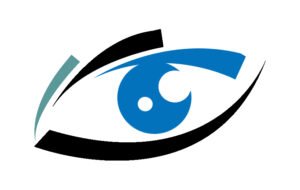
Squint
Squint is a clinical condition in which both the eyes do not align properly. While, one of the eyes turns inwards, upwards, downwards, or outwards, the other one focuses at one spot.
This happens when the muscles that control the movement of the eye and the eyelid do not work together and thus both the eyes do not look at the same spot at the same time. Squint can also happen because a disorder in the brain means that the eyes cannot correctly coordinate. Strabismus also makes binocular vision difficult hence making it very difficult for a person to appreciate depth perception.
Types of Strabismus
There are different types of strabismus which can be described by the cause or by the way the eye turns. The following terms describe strabismus by the positions of the eye:
Hypertropia is when the eye turns upwards
Hypotropia is when the eye turns downwards
Esotropia is when the eye turns inwards
Exotropia is when the eye turns outwards
An early diagnosis of the condition enables more effective treatment. While treatment up to the age of 6 years is believed to be most effective, strabismus can be treated at any age.
Signs and Symptoms in Children
Squint in the eye is quite noticeable from an early age in life. However, minor squint may be less noticeable. It is important to visit a Paediatric Ophthalmologist as the condition is normally either present at birth or it develops in the first 6 months after birth.
Lazy Eye
Squint, when left untreated, may lead to amblyopia, or “lazy eye,” which is a condition in which the brain starts ignoring input from one of the eyes to avoid double vision. When there is poor vision in the affected eye, a child may benefit from wearing a patch over the other eye to encourage the vision to develop.
In some cases of adults, squint treated successfully in childhood returns later in adulthood. This may lead to double vision as, by that time, the brain has been trained to gather data from both eyes, so it cannot ignore one of them.
Causes
The common causes can be associated with:
Congenital or birth conditions
Hereditary conditions running in families
Illness or long-sightedness
Lesion on a cranial nerve
The other causes can be:
Refractive errors making the affected eye turn inwards, in an attempt to get better focus. Such squints emerge in early childhood
Hydrocephalus
Noonan syndrome
Some viral infections, such as measles
Other genetic conditions.
Diagnosis and Treatment
It is advisable that children should have routine eye checks as they develop and if there are any early signs of strabismus, the paediatrician or physician should refer the child to a Paediatric Ophthalmologist.
The Paediatric ophthalmologist will probably use eye drops to dilate the pupils before doing the Hirschberg test, or Hirschberg corneal reflex test, which is used to assess whether the patient has strabismus. The ophthalmologist shines a light in the eye and observes where the light reflects from the corneas.
If the eyes are well-aligned, the light will go to the centre of both corneas and if it does not, the test can show whether the patient has exotropia, hypertropia, esotropia or hypotropia. Some people may have more than one tropia at the same time.
Treatment Options
A prompt treatment reduces the risk of complications, such as amblyopia, or lazy eye. The younger the patient is, the more effective the treatment is likely to be. The treatment options include:
Glasses: If the squint is due to any refractive error, wearing glasses can usually correct the squint
Eye patch: When an eye patch is worn over the good eye, this patch can make the affected eye to work better.
Botulinum toxin injection or Botox: If there is no underlying cause and the signs of squint appear suddenly, the doctor may recommend using Botox on the muscle over the eye. Botox will temporarily weaken the injected muscle, and this can help the eyes to align properly.
Eye drops and eye exercises
When no treatments are effective, then surgery is used. It can realign the eyes and restore proper binocular vision. During the surgery, the operating surgeon will move the muscle that connects to the eye to a new position. Occasionally both eyes need to be operated on to get the right balance.
Some Exercises for Squint
Follow these steps:
Hold a pencil at arm’s length, around midway between the eyes
Look at the pencil while moving it toward the nose, and try to maintain a single image of it
Keep moving the pencil toward the nose until you can no longer see it as a single image
Hold the pencil at the closest point where a single image is possible
If you cannot regain a single image, start again
